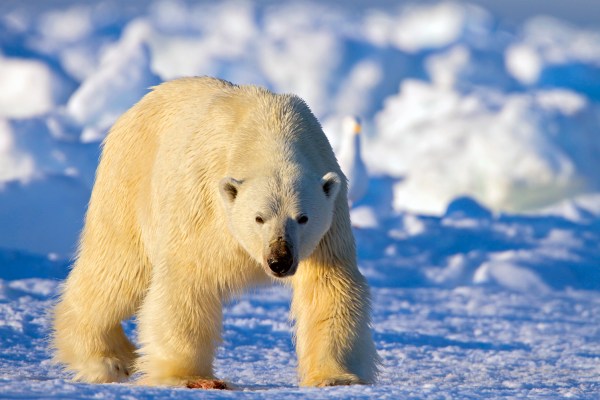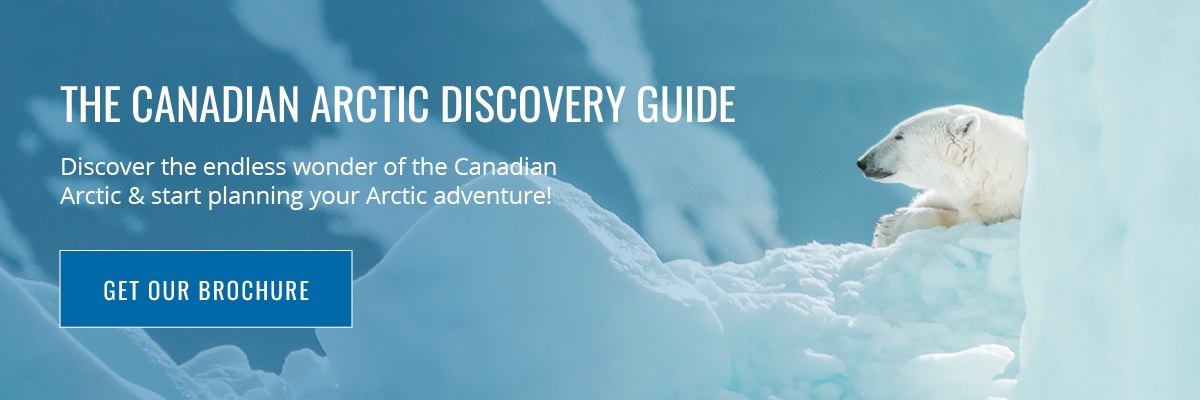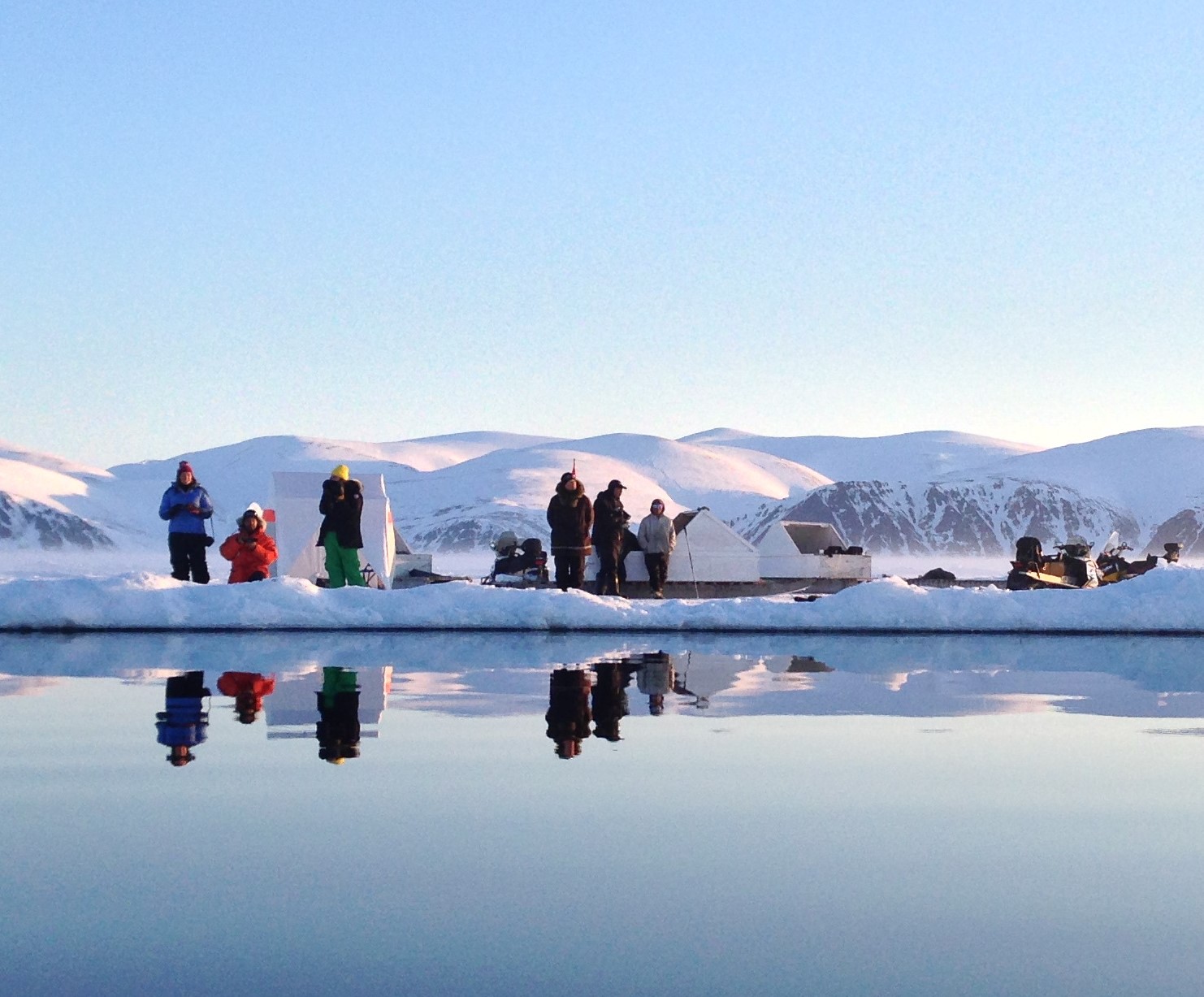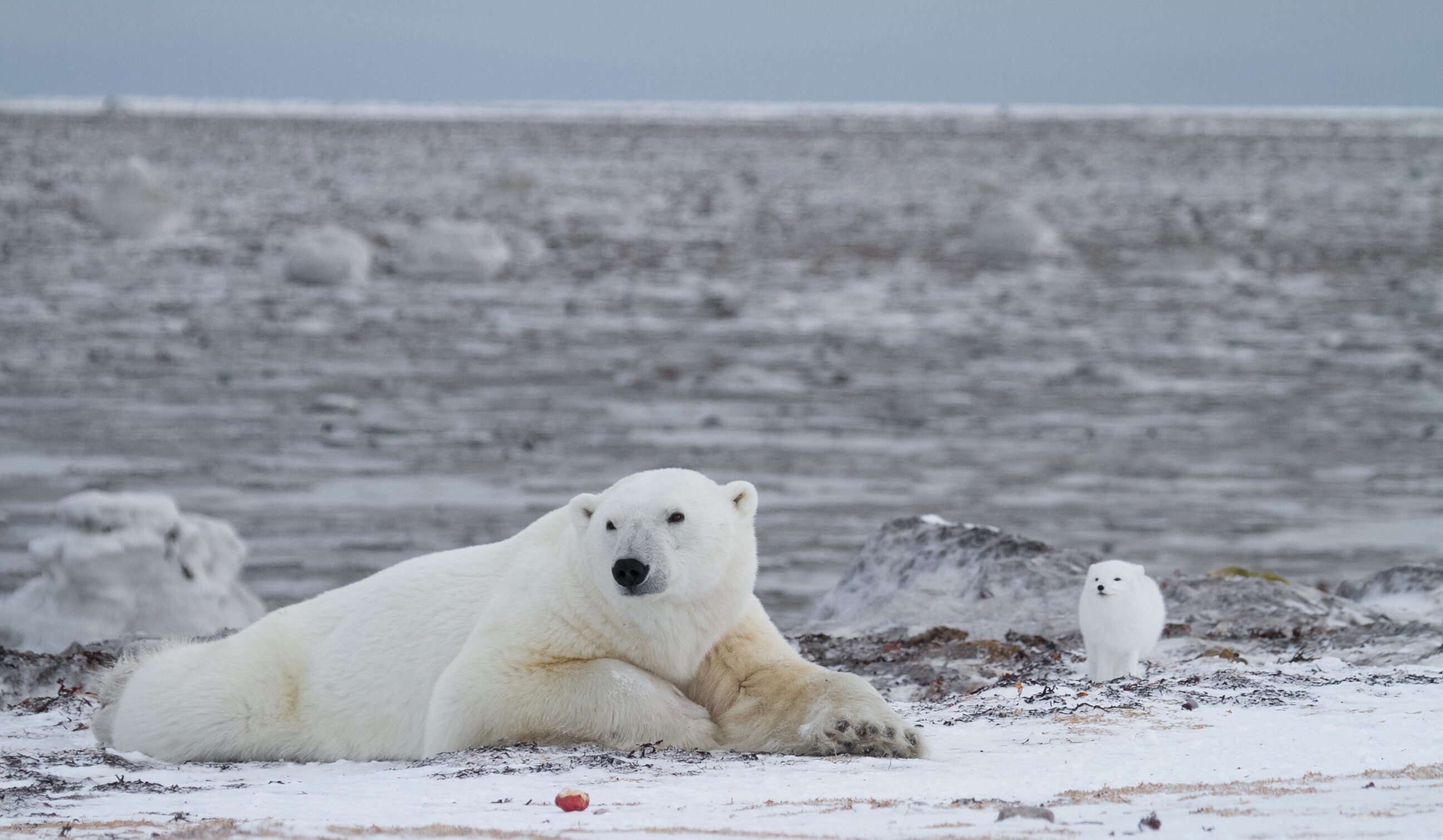What’s the difference between animals in the Arctic and Antarctica? Both polar destinations can be extreme, but spectacular for travelers seeking a unique trip. Wildlife, landscape and local culture set the Arctic and Antarctic apart.
This blog will run through what makes these polar opposites so special — covering key differences such as:
- Animals in the Arctic vs. Antarctica
- The Land: Arctic vs. Antarctica
- Landscapes of the Antarctic
- Travel Seasons
- Polar Travel Options: Arctic vs. Antarctica
Animals in the Arctic vs. Antarctica
Animals in the Arctic and the Antarctic are considered the last untamed wildernesses in the world. As a whole, animals in the Arctic can be found a lot more commonly than in the Antarctic.
Arctic territories are connected to continents such as North America, Europe or Asia, while the Antarctic is a harsh and isolated continent. The largest land animal on the continent is a 2–6 mm long wingless insect — the Belgica Antarctica.

Let's look at the different animals you can expect to see on both continents.
Arctic Wildlife
While on an Arctic trip, you can find many animals roaming the land, such as arctic foxes, hares, seals, walrus, caribou, reindeer, musk ox, lemmings, squirrels, different species of birds and polar bears. It’s also home to many species of whales, such as narwhal, beluga, bowhead and orcas.
Polar bears and narwhals are found exclusively in the Arctic. Canada alone is home to 60% of the world’s polar bear population and 75% of the narwhal population.
Antarctic Wildlife
Penguins are only found in the southern hemisphere in Antarctica, South America and the southern cape of Africa. You’ll find them huddled by the hundreds in their colonies or fishing in the southern waters and the penguin eggs start hatching during the summer months.
Antarctica is home to several marine animals. Besides penguins, it’s home to seal species, including leopard seals, southern elephant seals and sea lions. You can find a large population of whales — including the largest animal existing — the blue whale.
The Land: Arctic vs. Antarctica
Landscapes of the Arctic
Geographically, the Arctic comprises portions of eight different countries: Canada, Greenland, Russia, Norway, Sweden, Finland, Iceland and the USA.
.jpg?width=700&name=ezgif.com-gif-maker%20(1).jpg)
The North Pole is a point in the middle of the Arctic Ocean that’s permanently covered in sea ice. It’s located 700 km (430 mi) north of the nearest point of land, the northern tip of Greenland.
To the north, Greenland has the second largest polar ice cap next to Antarctica. With Jakobshavn Isbræ being the biggest glacier in the Northern Hemisphere. This is where most of the icebergs in the Canadian Arctic start.
These icebergs are filled with fresh water, making up an estimated 20% of Earth’s clean, purified water supply.
In addition to soaring icebergs, the landscapes of the Arctic include dramatic mountains, fiords and rolling tundra. The national parks of Baffin Island, Auyuittuq and Sirmilik are some of the most spectacular natural areas in the world.
Landscapes of the Antarctic
The two destinations are polar opposites regarding landscape. The Arctic is sea surrounded by land, while the Antarctic is surrounded by sea.
The South Pole is a point on the giant ice sheet located 1,300 km (800 mi) from the nearest open sea at the Bay of Whales. This staggering height is 2,835 m (9,300 ft) above sea level.
The Antarctic is 98% covered in ice. Its coastline is made up of icy mountain glaciers and smooth ice sheets. The total surface area roughly doubles each winter as sea-ice forms around the coasts.
In the summer, the ice breaks and the enormous ice-sheets crack and split. This forms giant icebergs that melt as they float north throughout the summer. Around this time, much of the water around Antarctica becomes fresh water from these melting ice sheets and glaciers.
The Culture: Arctic vs Antarctica
The Arctic has a rich culture and numerous populations have inhabited the Arctic for thousands of years. These include the Inuits of North America, Sami’s of Northern Europe and the Yakuts of Siberia, who have long inhabited the Arctic for around 20,000 thousand years.
Cultural experiences in the Arctic may include visiting remote communities with historic Viking and Inuit settlements, throat singing or other cultural demonstrations. The Northwest Passage alone boasts a fascinating history of exploration.
.jpg?width=700&name=ezgif.com-gif-maker%20(2).jpg)
Interacting with local Inuit and learning about traditional practices is also a highlight for many guests on Arctic Safaris. Antarctica is the fifth largest continent and the largest to have no permanent residence. In terms of tourism, Antarctica hosts anywhere from 1,000 to 5,000 scientists each year to conduct research.
Travel Seasons
The north and south polar regions follow similar daylight patterns throughout the year at opposite times.
In the Arctic, you can experience 24 hours of sunshine in the spring and summer — May to August. During this period, you get a chance to see the enviable Northern Lights. It’s also the perfect opportunity to witness wildlife migrations, including narwhal and beluga at the floe edge.
Antarctica has the opposite daylight cycle and experiences its summer in January. The continent has a cold, dry climate that ranges from 14° F to -22° F in the winter. The Arctic is a lot warmer in the winter, with the temperature of the coldest month rarely below 20 °F.
Polar Travel Options: Arctic vs. Antarctica
The polar regions offer incredible, life-changing experiences in destinations few have visited. The breathtaking scenery and iconic wildlife of the Arctic and Antarctic are a must-see for adventurous travelers worldwide.
While there are also cruise options for the Arctic, land-based Arctic safaris offer the incredible opportunity to experience up-close wildlife. You can get some of the best chances to view and photograph iconic animals like polar bears and narwhal on Arctic Safaris, including the Narwhal & Polar Bear Safari.
Want to See Animals in the Arctic?
Visiting the Arctic offers an experience that allows you to see enthralling wildlife, culture and vast landscapes in the flesh. Would you like to learn more about visiting the arctic? We can help you with this.
Download our brochure below to learn more about our once-in-a-lifetime arctic opportunities and start planning this unforgettable adventure.

.jpeg?width=2000&name=AdobeStock_324868446-1%20(1).jpeg)



